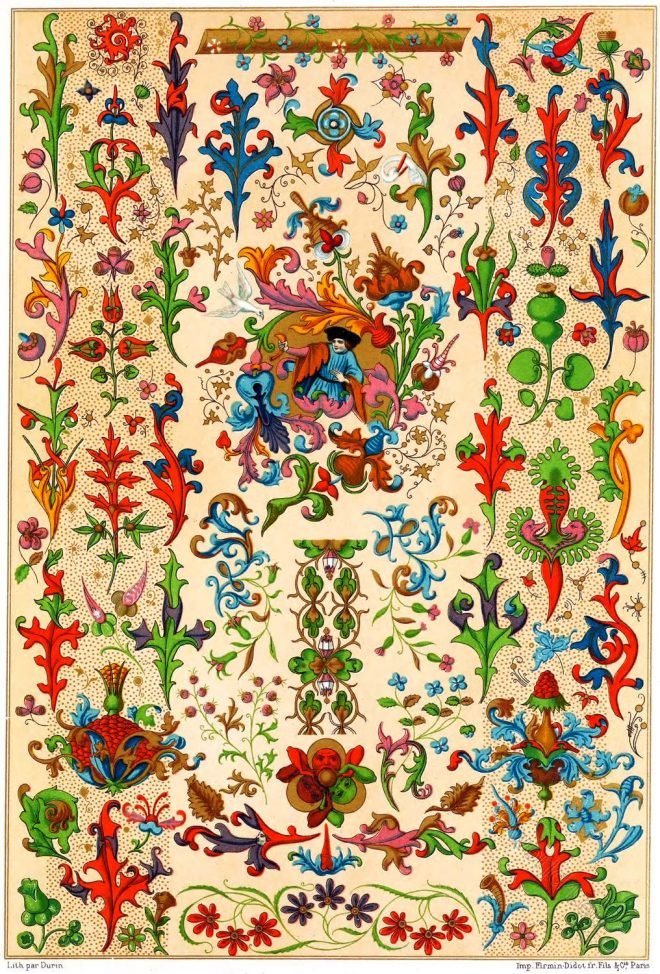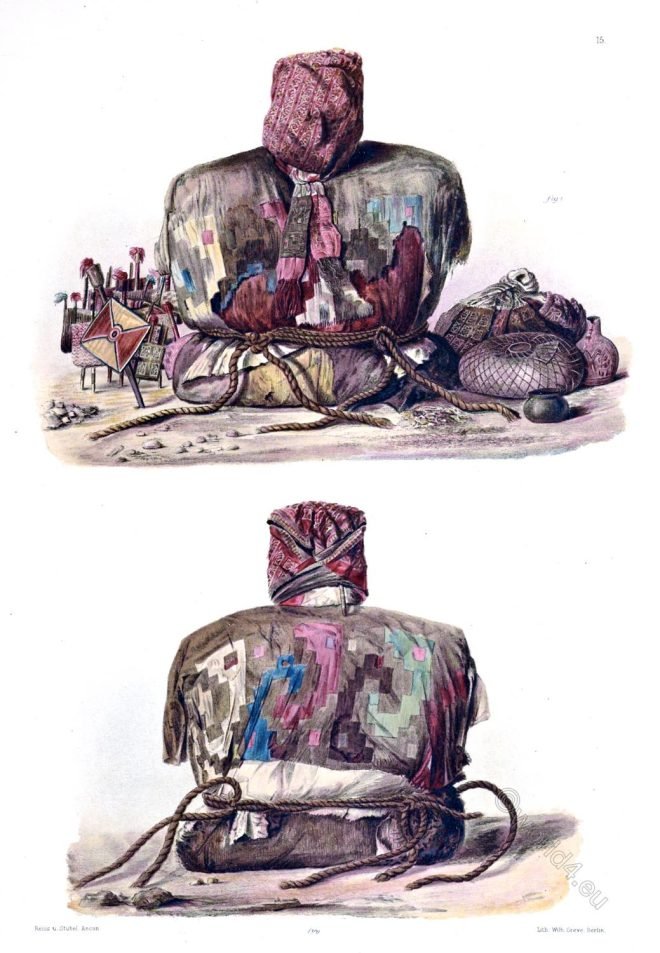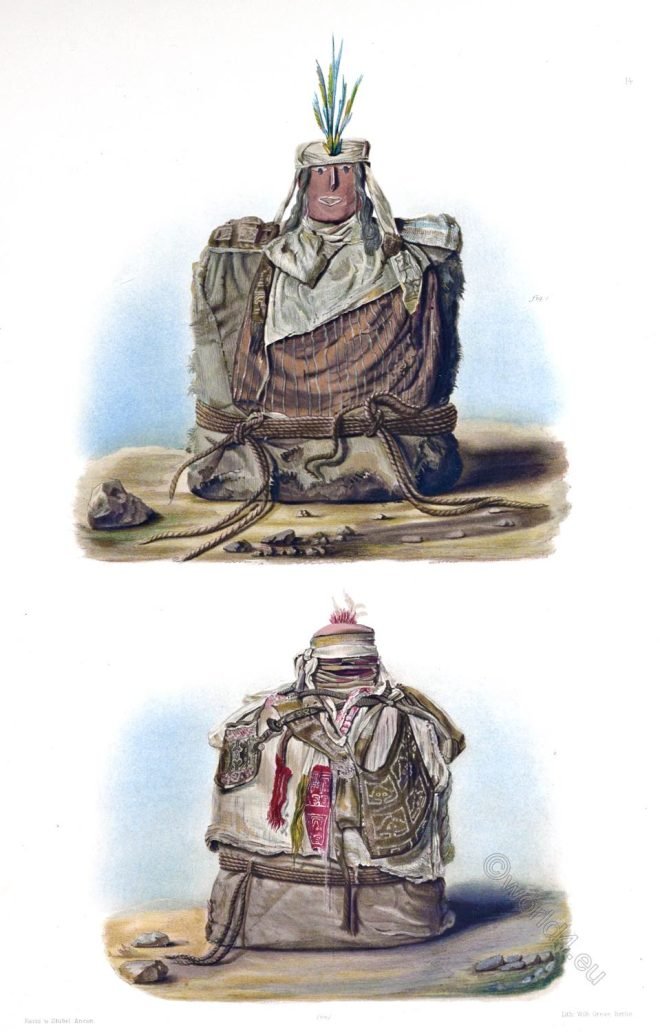THE details that fill the accompanying plate are too numerous for us to indicate the sources from which they have been derived, but they have all been taken from manuscripts of the fifteenth century.
Tag: Textile design
Persian Shah Abbas or Ispahan Carpet in Vase design of the 17th century.
Among the few entire carpets of its kind known to exist is this vase design from South Persia, known by the names “Shah Abbas” and “Ispahan.”
Hindu Prayer-Carpet manufactured at Ahmedabad.
The Prayer-Carpet forming our present illustration, manufactured at Ahmedabad, was chosen for the Museum of Ornamental Art as one of the most faultless of these Indian productions.
Characteristically English carpet of the time of James I, dated 1614.
The carpet is a very fine example of the time of James I. The whole design is characteristically English of the period.
The peculiar shape of a richly endowed mummy. Necropolis of Ancon.
Side view and section and the peculiar shape of the richly endowed mummy pack is clearly shown in the present illustration.
Two Mummies from one Grave. Front and back view. Ancon Peru.
Two Mummies from one Grave. Front and back view of a Mummy with a false head and funeral accompaniments.
Front views of two mummies from a common tomb.
The equipment of both while equally simple still testifies to the great affection lavished by the people on their dead.
Side view of the Peruvian Mummy from the necropolis of Ancon.
The disproportion is still greater in the case of the pillow forming the false head. The latter, is here represented without its envelopments, thus giving striking prominence to the peculiarities of the vividly painted features.
Textile design of the Assyrians. Materials, manufacture, colors, culture.
Mesopotamia. Materials, manufacture, colors, culture. Textile design of the Assyrians.
Byzantine silk fabric with elephants from the 8th to 10th century.
Silk fabric. Background red pattern opposite. Large circles with elephants. The pattern is a Byzantine redesign of an originally Sassanid pattern.










